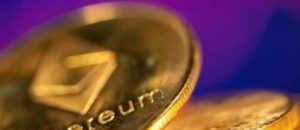–>
-
ALSO READ
Sam Bankman-Fried: ‘Crypto genius' who lost $14.5 billion in a single day
Former FTX CEO has no stake in Twitter as a private company: Musk
FTX CEO secretly gave $27 mn to crypto news site The Block, its CEO
Former FTX CEO Bankman-Fried says will testify to Congress over its fall
FTX to start US bankruptcy proceedings, CEO Sam Bankman-Fried to exit
-
–>
–>
In 2020, FTX's chief engineer made a secret change to the cryptocurrency exchange's software. He tweaked the code to exempt Alameda Research, a hedge fund owned by Sam Bankman-Fried, from a feature on the trading platform that would have automatically sold off Alameda's assets if it was losing borrowed money.
In a note explaining the change, the engineer, Nishad Singh, emphasised that FTX should never sell Alameda's positions. “Be extra careful not to liquidate”, Singh wrote in the comment in the platform's code, which it showed he helped author.
The exemption allowed Alameda to keep borrowing funds from FTX irrespective of the value of the collateral securing those loans. That tweak in the code got the attention of the US Securities and Exchange Commission (SEC), and charged Bankman-Fried with fraud.
The SEC said the tweak meant Alameda had virtually unlimited line of credit. Furthermore, the billions of dollars that FTX secretly lent to Alameda over the next two years didn't come from its own reserves, but rather were other FTX customers' deposits.
The regulator, which called the exchange a house of cards, alleged Bankman-Fried concealed that FTX diverted customer funds to Alameda in to make undisclosed venture investments, luxury real estate purchases, and political donations. US prosecutors and the Commodity Futures Trading Commission also filed separate criminal and civil charges.
The auto-liquidation exemption written into FTX code allowed Alameda to continually increase its line of credit until it grew to tens of billions of dollars and effectively became limitless, the SEC complaint said. It was one of two ways that Bankman-Fried diverted customer funds to Alameda.
The other was a mechanism whereby FTX customers deposited over $8 billion in traditional currency into bank accounts secretly controlled by Alameda. These deposits were reflected in an internal account on FTX that was not tied to Alameda, which concealed its liability, the complaint said.
In congressional testimony on May 12, he called FTX's software safe, tested and conservative. He did not tell lawmakers about the software change to exempt Alameda.
US customers have best chance to get their money back
FTX's US-based account holders are more likely than other customers in the world to get access to their assets on the crypto platform. John J. Ray III, in charge of restructuring, told a panel of US lawmakers that he's optimistic they'll be able to recover and return funds. US customers sooner and more fully than those on the FTX.com platform, which is largely for international users.
In 2020, FTX's chief engineer made a secret change to the cryptocurrency exchange's software. He tweaked the code to exempt Alameda Research, a hedge fund owned by Sam Bankman-Fried, from a feature on the trading platform that would have automatically sold off Alameda's assets if it was losing borrowed money.
In a note explaining the change, the engineer, Nishad Singh, emphasised that FTX should never sell Alameda's positions. “Be extra careful not to liquidate”, Singh wrote in the comment in the platform's code, which it showed he helped author.
The exemption allowed Alameda to keep borrowing funds from FTX irrespective of the value of the collateral securing those loans. That tweak in the code got the attention of the US Securities and Exchange Commission (SEC), and charged Bankman-Fried with fraud.
The SEC said the tweak meant Alameda had virtually unlimited line of credit. Furthermore, the billions of dollars that FTX secretly lent to Alameda over the next two years didn't come from its own reserves, but rather were other FTX customers' deposits.
The regulator, which called the exchange a house of cards, alleged Bankman-Fried concealed that FTX diverted customer funds to Alameda in to make undisclosed venture investments, luxury real estate purchases, and political donations. US prosecutors and the Commodity Futures Trading Commission also filed separate criminal and civil charges.
The auto-liquidation exemption written into FTX code allowed Alameda to continually increase its line of credit until it grew to tens of billions of dollars and effectively became limitless, the SEC complaint said. It was one of two ways that Bankman-Fried diverted customer funds to Alameda.
The other was a mechanism whereby FTX customers deposited over $8 billion in traditional currency into bank accounts secretly controlled by Alameda. These deposits were reflected in an internal account on FTX that was not tied to Alameda, which concealed its liability, the complaint said.
In congressional testimony on May 12, he called FTX's software safe, tested and conservative. He did not tell lawmakers about the software change to exempt Alameda.
US customers have best chance to get their money back
FTX's US-based account holders are more likely than other customers in the world to get access to their assets on the crypto platform. John J. Ray III, in charge of restructuring, told a panel of US lawmakers that he's optimistic they'll be able to recover and return funds. US customers sooner and more fully than those on the FTX.com platform, which is largely for international users.
FTX bankruptcy: Bahamas challenges American case
Bahamian liquidators are set to scuffle with US-based bankruptcy lawyers over the remains of Fried's crypto empire on Wednesday, highlighting a key tension hanging over the downfall of FTX.
The Securities and Exchange Commission (SEC) said that Bankman-Fried raised more than $1.8 billion from investors.
The sides have traded jabs in recent days through a series of court filings about who can access sensitive FTX data. US-based lawyers have accused Bahamanian officials of working closely with Bankman-Fried. Bahamian liquidators said they're entitled to the information so they can clean up a locally based subsidiary.
The conflict intensified Monday as Bahamas court officials demanded that millions of dollars of company-owned real estate on the island nation be removed from oversight by a US judge. That effort, if successful, could give the liquidators control of millions of dollars more in assets.
Bloomberg






